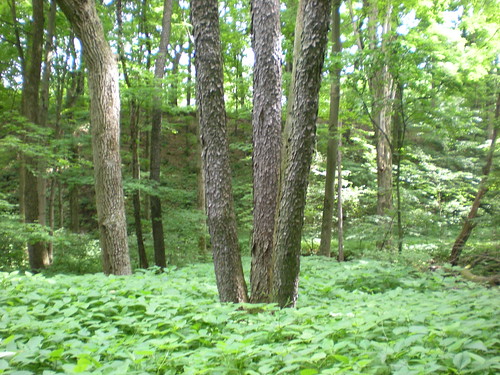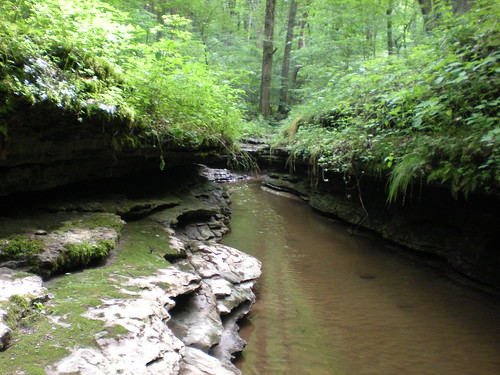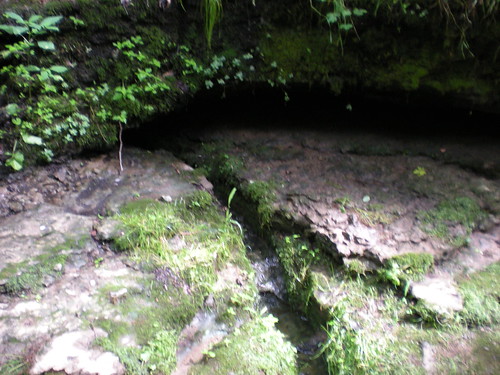The state park is nice! In many ways the forest is similar to the ones I am used to seeing in the Champlain Valley of Vermont - with abundant oaks, maples, and hemlocks and some basswood and black cherry trees tossed in for variety. There were a few reminders that I am further south too, such as a few tulip trees and sycamores (which occur only in far southeastern Vermont) and an rhododendron in the understory.

Black cherries and other deciduous trees! There were also dense hemlock groves but my pictures of them didn't come out very good since it is DARK in there!

Black cherry bark is sometimes referred to as 'burnt potato chips'. This tree is valued by many animals which eat its bitter cherries, and by foresters and furniture makers, who value the beautiful wood in these trees. Black cherries need to grow up in a bit of sun, so their presence here suggests some sort of human or natural disturbance in the past.

This is pale touch-me-not, a relative of jewelweed. This plant likes relatively rich soils, as does the basswood that also grows in the area. Farmers also like rich soils, and most areas surrounding the park that are not very steep are used as farmland.

This is Slippery Rock Creek which flows through this canyon:

The canyon was cut about 140,000 years ago when smaller creeks flowing north were blocked by a glacier, forming a lake that spilled over a ridge. As such, the canyon is much 'younger' than the features around it (the Appalachians are a very ancient mountain range). The steep walls of the canyon are mostly forested, and within the state park.

In this way, the park is like a larger version of Schenley Park and Panther Hollow. There are of course not as many urbanized areas around the state park as around Schenley Park, but most of the flatter areas adjacent to the canyon are agricultural or pasture land, which i suppose is somewhat similar to the golf course and manicured lawns in the flatter parts of Schenley Park.

My favorite part of the park was the poorly-named "Hells Hollow" area. The only thing hellish about the area was the mosquitos - but otherwise it was a beautiful and interesting place.

Hell Run has carved its way into the rock and created a channel which actually looks like a natural version of the concrete channels of the city. It is of course much prettier, but not much absorption or filtration of water happens here!

These ripples are not in sand or silt deposited in the creek, but part of the solid bedrock in the channel! It appears that the bed of this creek is in a fossilized lakeshore or silty riverbed from millions of years ago... I had to actually touch the ripples to believe that they were solid rock.

This is a little spring that has cut its own channel out of the rock. Like all springs, this one gets its water from precipitation that soaks into the ground and/or through cracks in bedrock and is forced out later. This water probably fell as rain or snow months or even years ago. Thinking back to Pittsburgh, one of the consequences of having so much concrete (and not enough rain gardens) is that water is not seeping into springs as much as it used to.

There's also a great waterfall, which is an easy hike from the parking area.
This visit allowed me to get out of the city for a bit and experience a more 'natural' area, but it also reminded me that Pittsburgh also has a similar (though smaller) natural area right in the middle of the city!
More information on the natural history of McConnells Mill State Park is found here.

No comments:
Post a Comment